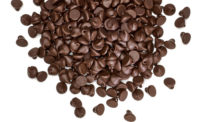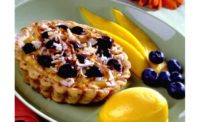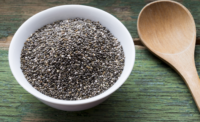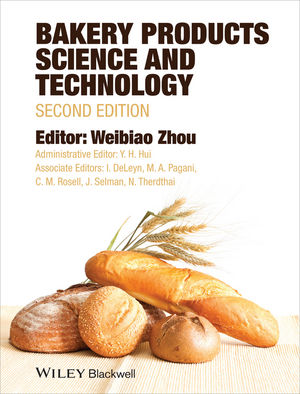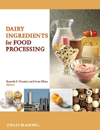Consumer trends and interest in health and wellbeing driving greater variety of grains for bakery and snack manufacturers
Health-conscious consumers are driving growth in grains both old and new.

Courtesy of ADM
The Bottom Line:
- Consumers want nutritional benefits
- Interest in gluten- and grain-free options increasing
- Supply chain challenges easing
Grains are a fundamental ingredient in snack and bakery products. In addition to providing taste and texture, they play a key role in delivering many nutritional and functional benefits to the products.
The type and formats of grains used by manufacturers has grown over the years. For example, the snack and bakery categories are seeing more ancient grains and pulses.
“We have seen continued demand for amaranth, quinoa, and millet, along with increased interest in sorghum, flax, buckwheat, and pulses,” explains Jennifer Tesch, chief marketing officer, Healthy Food Ingredients. “These ancient grains and pulses are popular because they can address other trends or label claims, including whole grain, gluten-free, clean label, non-GMO, organic, and plant-based proteins, serving as multi-purpose, functional ingredients.”
New and in-demand grain ingredients
ADM has recently launched HarvestEdge Gold sorghum, which is a special white variety of the ancient grain that has a sweet and nutty flavor profile and light color. Paula LaBine, marketing director, milling and baking solutions, ADM, describes this new product: “Our certified gluten-free, non-GMO sorghum is sustainably sourced and processed, as 100% of farmed acres are enrolled in sustainable agriculture projects and processed in our carbon neutral mill in Dodge City, KS. We work closely with our sorghum growing partners to ensure responsible stewardship of the land.”
“Sorghum is an ideal crop for arid western Kansas, as it requires low inputs of water and fertilizer,” LaBine continues. “Many of our sorghum crop producers have adopted multiple regenerative agriculture practices, such as increasing crop diversity, minimizing soil disturbance, and integrating livestock. These methods help support short and long-term environmental improvements.” The HarvestEdge Gold sorghum can be used to enhance a variety of wheat-based foods such as breads, cereals, crackers, and cookies, as well as multigrain and gluten-free products.
Ardent Mills has completed their asset acquisition of a gluten-free milling and blending facility in Harvey, ND, which expands the company’s gluten-free capabilities and expertise. With the acquisition, the company is now directly selling many gluten-free flours and custom blends, including oat, chickpea, buckwheat, sorghum, millet, and more. The company has also launched new gluten-free and keto-friendly flour blends into the Canadian market after a successful U.S. launch. Lindsay Morgan, senior director of product marketing, Ardent Mills, shares the highlights of these new products:
- Gluten-Free 1:1 All-Purpose Flour: suited for retail bakeries, wholesale bakeries and foodservice operators, this formula can be used as a one-to-one replacement for conventional flour in most recipe applications without compromising taste, texture, or functionality
- Keto-Friendly Flour Blend: a proprietary functional ingredient system, this blend was formulated to achieve the right balance of dietary fibers and grain without nuts or nut flour and does contain gluten, which allows customers to run on their current equipment without significant changes. It can be used in a broad range of bread and baked goods

Courtesy of Grain Processing Corp.
Grain Processing Corp. has recently launched FYBRIN RS resistant starch. “FYBRIN RS adds nutritional value to food products by increasing the fiber content,” shares Kelly Belknap, business development manager, specialty ingredients, Grain Processing Corp. “FYBRIN RS is produced from American grown corn and meets the FDA definition of dietary fiber. The resistant starch is a minimum of 85% dietary fiber. The fiber is often used to replace a portion of flour in crackers, tortillas, and breads. It is often used at high levels; 20% additions are not uncommon. When used at high levels, it may also help formulators achieve lower calories.”
The company is also seeing success with gluten-free applications, since corn is inherently gluten-free and not a top allergen concern.
“One growth area for grains lies in the tortilla chip market, which accounts for roughly a third of the entire salty snack market. Masa flour is the foundation of many of these chips and continues to see steady demand,” says Courtney LeDrew, senior marketing manager, Cargill. “Cargill’s masa flour starts with high-quality white and yellow corn from the American Midwest. Then we use a proprietary dry-milling process to produce masa flour in a more sustainable way than traditional wet-milling approaches. Our unique process uses 80% less water than the conventional method.”
While malted barley flours are far from a new ingredient and are actually one of the oldest food ingredients to exist, companies continue to use them in new ways that provide bakers and snack makers with particular advantages in today’s market demanding clean label, explains Shawn Kohlmeier, director of sales, food division, Briess.
“We are seeing many of these brands integrate specialty malted barley flours into baked goods and snacks that can provide flavors such as caramel, chocolate, and espresso notes with colors from light brown to black,” explains Kohlmeier. “What’s great from a label perspective is that often malted barley flour is already on the label as it is used to standardize utility flour. Specialty flours can also be used to pull caramel color off the label in bake goods.”
Bay State Milling has seen the demand for wheat-based products increase significantly due to several factors: COVID-driven changes, supply chain, the impact of food inflation, and consumers’ desire for better-for-you options. As a result, the company has seen increased demand for its HealthSense High Fiber Wheat Flour. This product provides up to 10 times the fiber of traditional refined wheat flour with the same great taste and texture.
Vital wheat gluten: supply and demand
“Vital wheat gluten is another in demand staple in the bakery space, and new to our North American portfolio. It’s widely used in bread formulations, where it offers benefits that support mixing, dough handling, and finished product quality,” shares LeDrew. “Vital wheat gluten brings nutritional benefits, too, as it has a high protein content. With 75% protein on a dry matter basis, a small amount of vital wheat gluten provides an affordable boost to the protein content of baked goods and snacks.”
Cargill is one of the largest suppliers of vital wheat gluten and with their global footprint, the company is able to offer a consistent, reliable source of supply.

Courtesy of Batory Foods
Matt Hernal, vice president, product management, Batory Foods, explains the current state of supply the company is seeing on vital wheat gluten.
“There was a large shortage of vital wheat gluten in 2021, but the supply chain in 2022 seemed to show vast improvements in comparison to last year,” says Hernal. “While we have seen some new products being developed as vital wheat gluten replacers and/or extenders, those do require R&D testing as well as a label change on the finished product. While the issue with shortages seems to be improving, the overall demand for vital wheat gluten continues to be strong.”
Gluten- and grain-free trends
Most of the companies interviewed anticipate increased interest and demand for gluten-free. ADM has noticed an uptick in requests for gluten- and grain-free options.
“Consumers have a growing interest in lifestyle diets and other eating approaches, like keto and paleo, which is moving the market beyond consumers with gluten intolerance or celiac disease. In fact, 11% of US consumers are considered gluten avoiders,” shares LaBine. “Snack and bakery manufacturers are responding by exploring grain and gluten-free flours. Over the last five years, 20% of product launches for baking mixes and 17% of savory cracker product launches were gluten-free.”
“The gluten-free category is driven by more market perceptions than medical necessity. In fact, according to Ardent Mills proprietary research, over 50% of consumers claim to choose gluten-free food at least some of the time, confirming that many consumers are eating gluten-free by choice,” explains Matthew Schueller, director of marketing insights and analytics, Ardent Mills. “Consumers are adapting their lifestyle and dietary patterns in pursuit of their individual perception of health and wellness. Food manufacturers have responded to these lifestyle and dietary patterns and the gluten-free category as a whole has grown exponentially as a result. Within the gluten-free bakery category, alternative and emerging grains are rapidly growing in popularity since they are able to provide the taste, texture, and satisfaction of traditional bakery items without gluten.”
Healthy Foods Ingredients now has the capability to offer gluten-free specialty flours, including buckwheat, amaranth, quinoa, chickpea, navy beans, sorghum, and millet. From a functionality standpoint, ancient grains and pulses incorporate well into cereal and other baked items either individually or blended together for applications including baking mixes, crackers, cereals, chips, or bread, shares Tesch.

Courtesy of Healthy Food Ingredients
With consumers looking to add more protein and fiber to their diet as well as gluten-free options, chickpea flour could be a good choice.
“Chickpea flour has more protein and fiber compared to conventional wheat flour. Grain Processing Corporation recently completed the acquisition of Natural Products Inc., which specializes in whole chickpea flour and whole soy flours,” shares Belknap. “The chickpea flour goes through a proprietary process to neutralize the flavor and eliminates any beany off notes.” NPI’s CP-100 is suited for snacks such as crackers and cookies.
While many of the grains that Briess works with are gluten-free, they are now expanding their offerings.
“We also offer a wide array of rice products in our pregelatinized line from flours to brown rice light crunch that provide wonderful flavor and texture to crackers in particular,” says Kohlmeier. “Moving further into value-added gluten-free ingredients, we have seen interest in sorghum extract increase during the past 12 months. This product is made from white grain sorghum and is an extract from the grain. While most sorghum syrups feature molasses-like color and flavor, Briess’s sorghum extract is along the lines of clover honey.”

— Jillian Wishman, strategic marketing manager, Bay State Milling
Jillian Wishman, strategic marketing manager, Bay State Milling, notes that the “gluten-free market has continued to grow throughout 2022 and shows no signs of stopping with consumers continuing to search for gluten-free products along with sustainability claims. Our SowNaked Oats are in high demand to satisfy this craving. Grown under strict gluten-free Purity Protocol standards, SowNaked’s offerings combine the wholesome, heart-healthy goodness of oats with the energy and muscle-building power of protein--for those avoiding gluten and others who simply enjoy the ingredient. SowNaked has 40% more protein and produces 50% fewer gas emissions than traditional oats.”
Hernal concurs to seeing continued interest in gluten-free products across a variety of market segments: breads, tortillas, and snacks. The number of products in the market that are gluten-free or grain-free continues to increase and the overall taste and flavor profile of these products has vastly improved over the last few years.
Schueller provides his perspective on the grain-free trend. “Grain-free is a more niche audience. In fact, fewer than one in 10 (7%) consumers claim to eat grain-free. We have seen small growth within this category in baked goods (bread, cake, cookies, crackers, bars) where grain-free introductions have grown about 3% CAGR 2017- 2021. However, the peak for baked goods seems to have been 2019 and 2020.”
“Overall, new products with grain-free claims were down in 2021 and are on pace in 2022 to fall short of 2021,” adds Schueller. “When diving into this category further, we found that seeds such as flax, chia, and pumpkin play a key role in grain-free baked goods. Overall, the data suggests that grain-free is going to remain a marginal behavior for the foreseeable future.”
Improved supply chain challenges
While some of the supply chain issues seemed to have eased somewhat versus 2021, many of the manufacturers have already put into place processes and protocols to mitigate the impact of these lingering supply chain challenges. Here are some of the steps taken to ensure a reliable source of supply:
- Keeping more inventory on hand and providing additional lead time to suppliers.
- Leveraging the company’s global footprint and developing more adaptable formulas.
- Developing a closed-loop supply chain in various geographies to ensure consistent supply and quality.
- Vertically integrating some operations, which provides the complete control of the supply chain.
- Clearly forecasting and communicating with vendors, and adjusting both raw materials and finish goods stocking patterns.
Looking for a reprint of this article?
From high-res PDFs to custom plaques, order your copy today!



